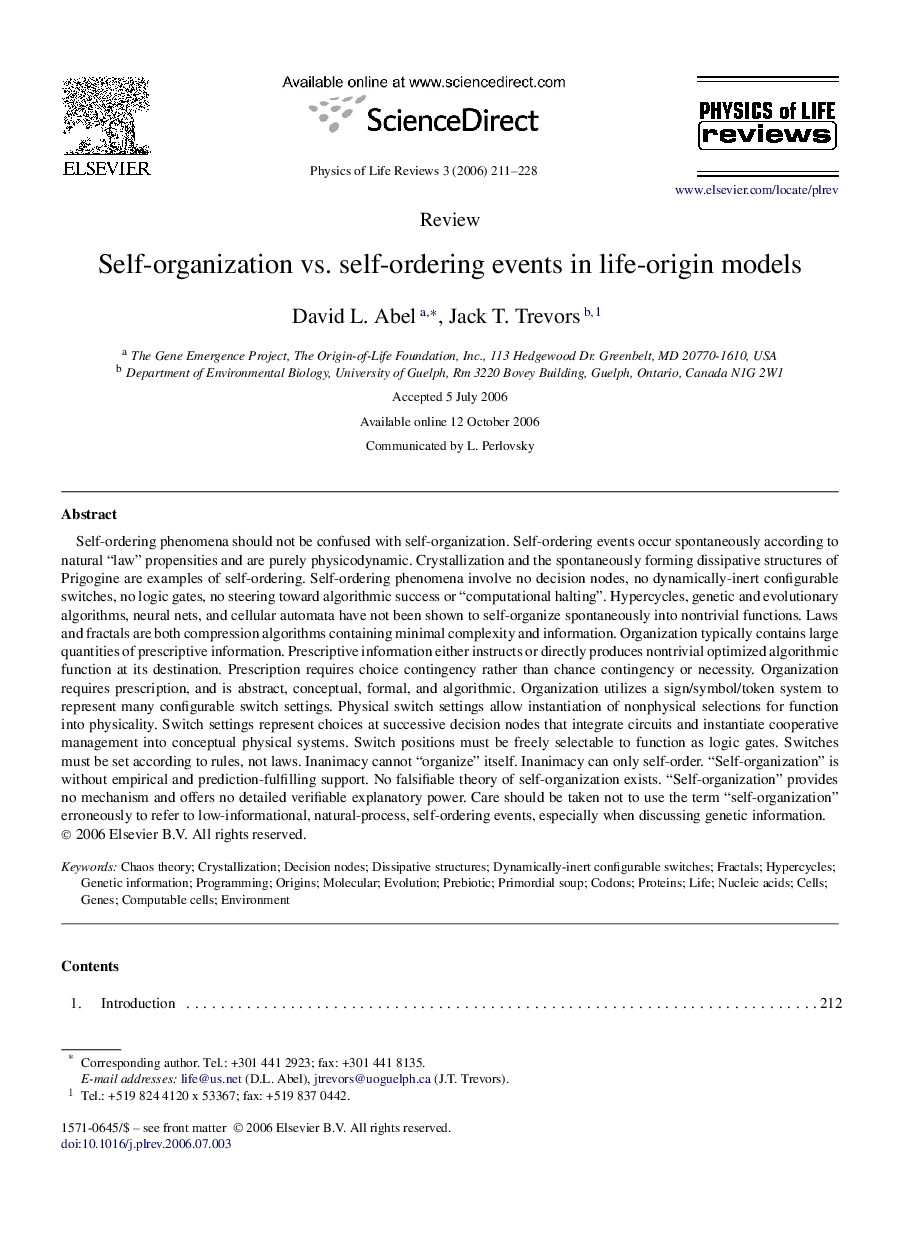| Article ID | Journal | Published Year | Pages | File Type |
|---|---|---|---|---|
| 1868675 | Physics of Life Reviews | 2006 | 18 Pages |
Self-ordering phenomena should not be confused with self-organization. Self-ordering events occur spontaneously according to natural “law” propensities and are purely physicodynamic. Crystallization and the spontaneously forming dissipative structures of Prigogine are examples of self-ordering. Self-ordering phenomena involve no decision nodes, no dynamically-inert configurable switches, no logic gates, no steering toward algorithmic success or “computational halting”. Hypercycles, genetic and evolutionary algorithms, neural nets, and cellular automata have not been shown to self-organize spontaneously into nontrivial functions. Laws and fractals are both compression algorithms containing minimal complexity and information. Organization typically contains large quantities of prescriptive information. Prescriptive information either instructs or directly produces nontrivial optimized algorithmic function at its destination. Prescription requires choice contingency rather than chance contingency or necessity. Organization requires prescription, and is abstract, conceptual, formal, and algorithmic. Organization utilizes a sign/symbol/token system to represent many configurable switch settings. Physical switch settings allow instantiation of nonphysical selections for function into physicality. Switch settings represent choices at successive decision nodes that integrate circuits and instantiate cooperative management into conceptual physical systems. Switch positions must be freely selectable to function as logic gates. Switches must be set according to rules, not laws. Inanimacy cannot “organize” itself. Inanimacy can only self-order. “Self-organization” is without empirical and prediction-fulfilling support. No falsifiable theory of self-organization exists. “Self-organization” provides no mechanism and offers no detailed verifiable explanatory power. Care should be taken not to use the term “self-organization” erroneously to refer to low-informational, natural-process, self-ordering events, especially when discussing genetic information.
